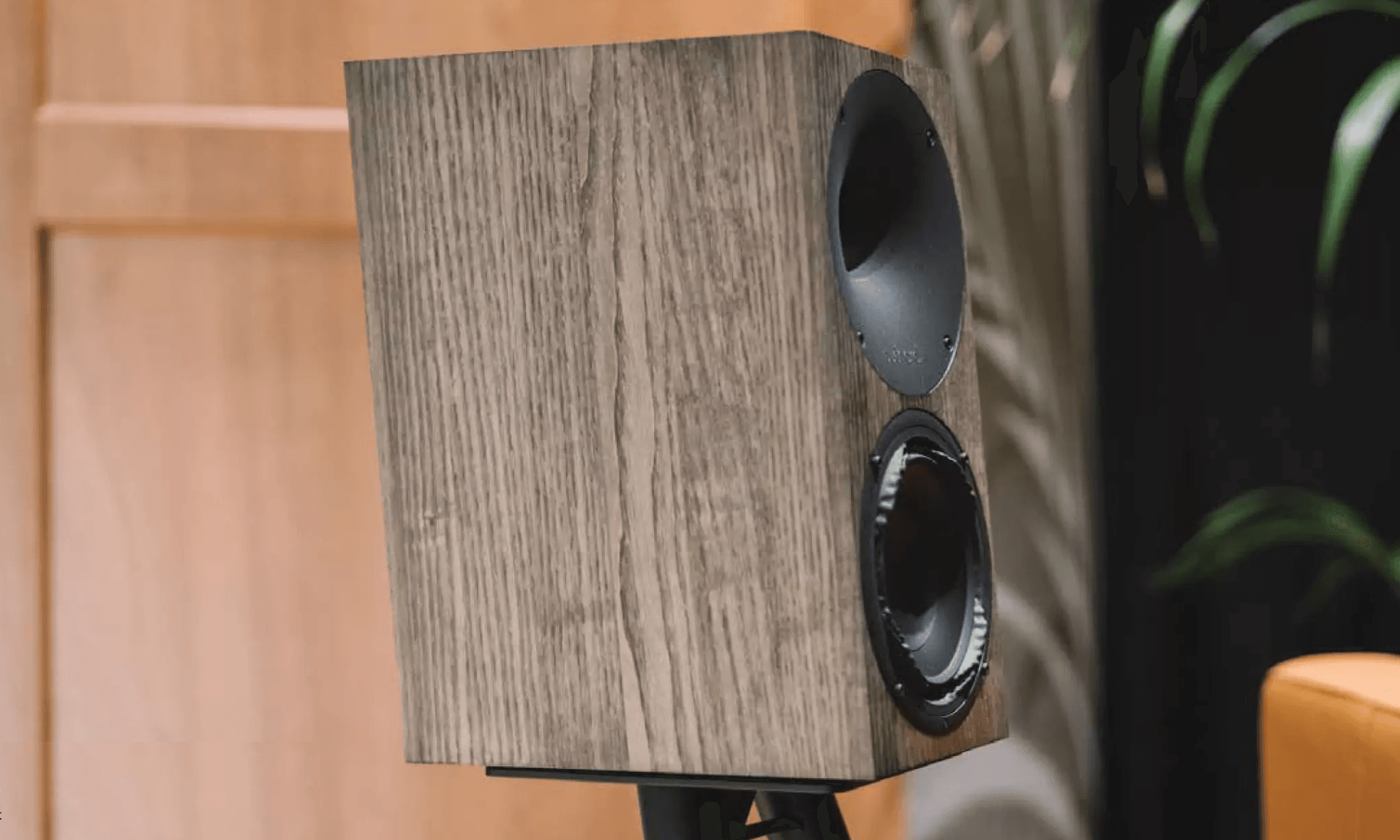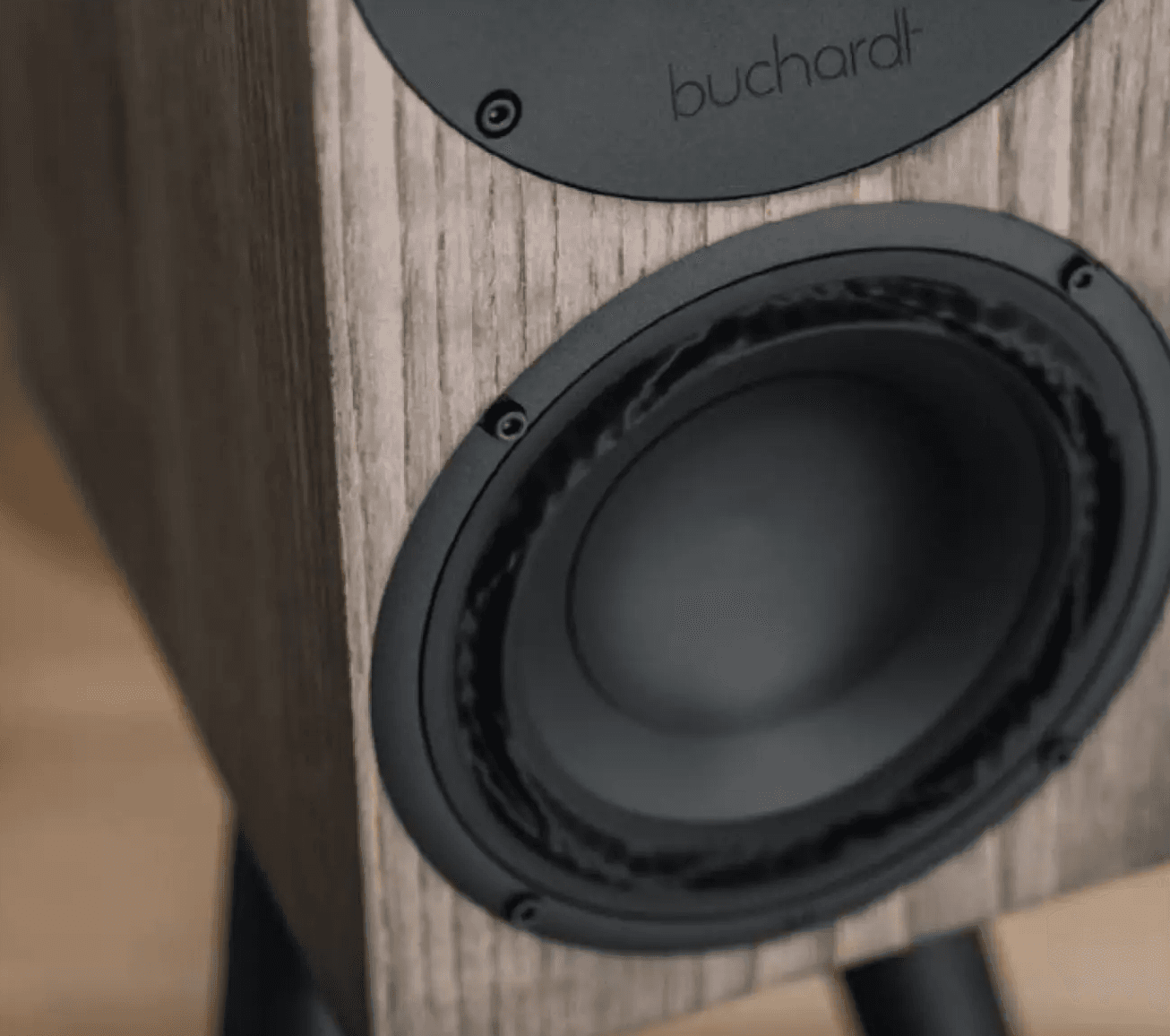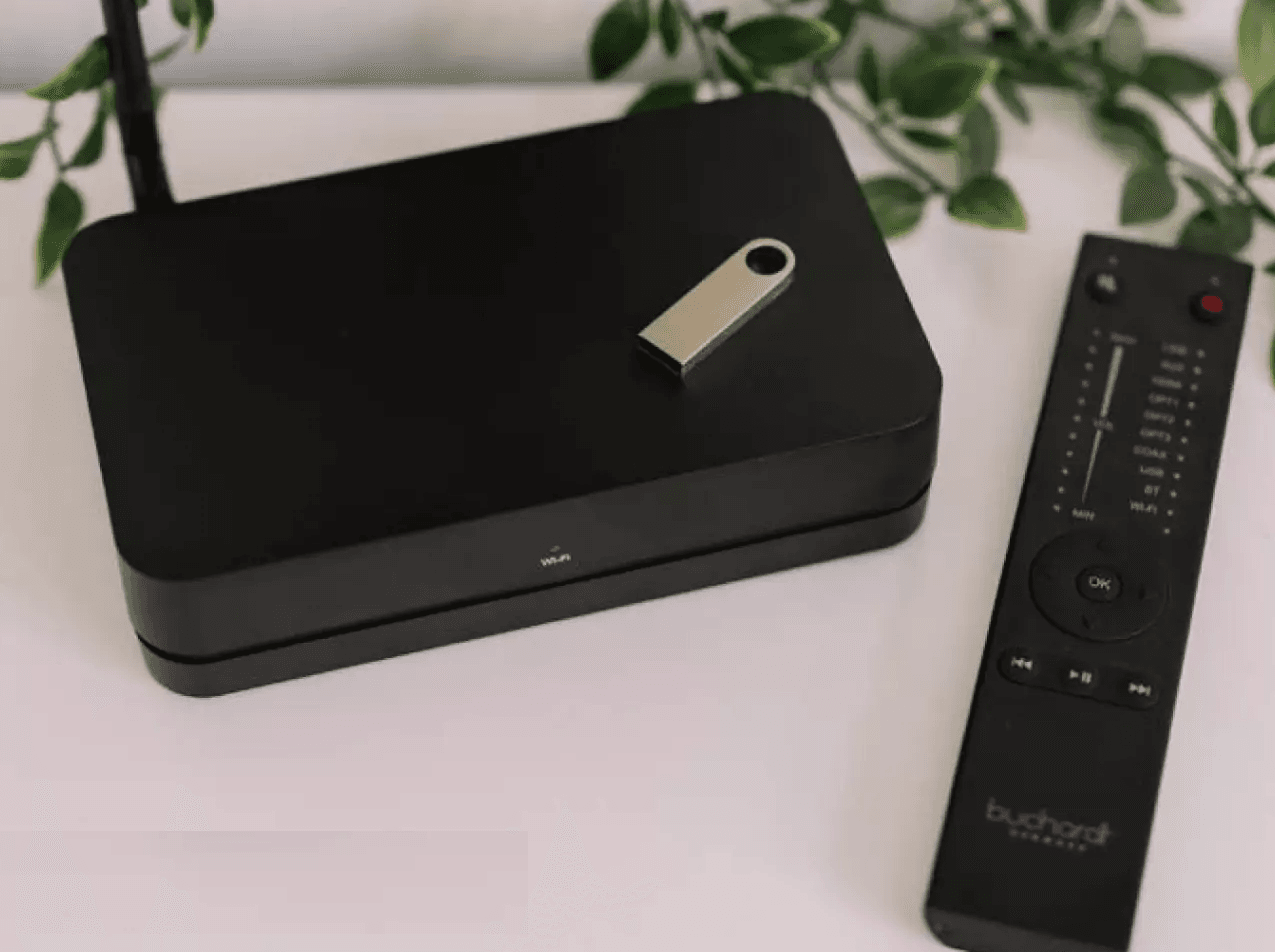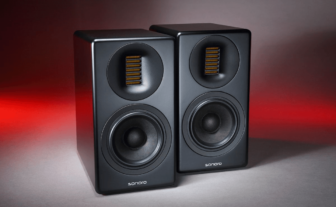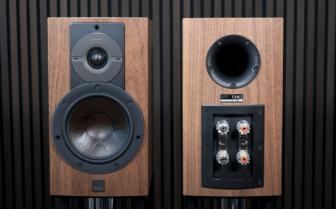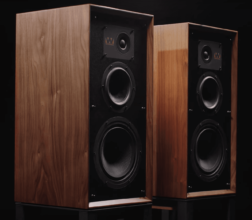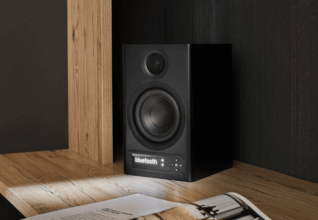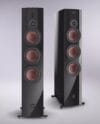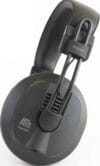Buchardt Audio Anniversary 10 (A10) Review
Danish Mads Buchardt was the industry’s bad boy with his one-man mail-order company. 10 years later, the company has grown up.
by JOHN ALEX HVDLYKKE
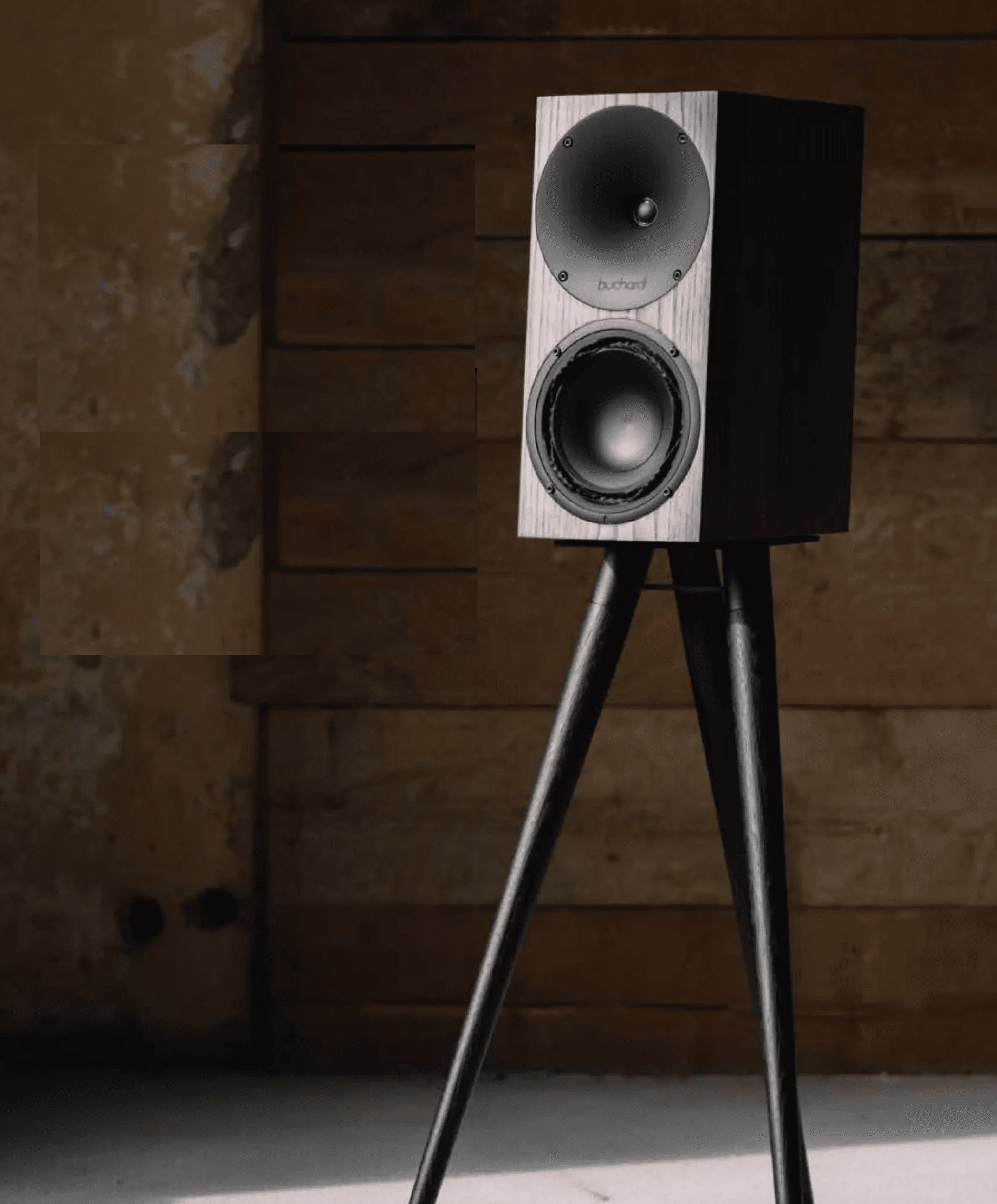
When we first met Mads Buchardt at a hi-fi fair, he amazed us with his compact, great-sounding speakers that were sold via mail order directly from the one-man company’s warehouse—and at prices far below those of established competitors. Could such a concept really work?
It could! A decade later, Mads Buchardt still manufactures speakers according to the same recipe. And they can still be purchased anywhere in the world. Shipping is included (with a few exceptions) in the price. Buchardt Audio Anniversary 10—or just A10—is the anniversary model that marks the brand’s first decade. The concept is recognizable from that time, although the level of ambition and the price have increased somewhat. As (almost) always, the Buchardt A10 is a compact two-way standmount speaker, and it also promises abyss-deep bass in a cabinet the size of a shoebox.
But then the similarities end. For one thing, the Buchardt Audio A10 is an active speaker. A 150-watt amplifier drives the bass element, and the tweeter has 50 watts at its disposal. The amplifiers are of the PowerDAC type, and digital from input to output. The signal is digitized at the input connectors (balanced XLR), and the rest happens in the digital domain. This also means that you don’t necessarily have to settle for the frequency response and tuning that the speakers are delivered with. Alternative voicings can be downloaded.
EXPENSIVE PURIFI BASS DRIVERS
The bass unit is the famous, but also very expensive Ushindi unit from Danish Purifi. The unit is known for its “curly” edge suspension, which helps give it record-low distortion—and a record-long cone movement. The tweeter is Buchardt’s own creation, a 19 mm aluminum dome mounted at the end of a large aluminum waveguide. The cabinets are a chapter in themselves. Mads Buchardt has chosen to go against a more than half-century-long tradition by building the cabinets in solid wood instead of MDF, which is considered more resonance-dead. The explanation is that solid wood is more environmentally friendly than MDF, which uses large amounts of glue in production—and it also looks better. Regarding the latter, we can only agree with Buchardt. And the cabinets still seem very resonance-dead.
Analog Cable or WiSA
There are two ways to get sound through the Buchardt A10. The speakers can be connected to an analog audio source in the good old-fashioned way with a cable, or wirelessly, digitally via WiSA. The inputs on the back are balanced XLR connections, but to connect them to the standard RCA output on a preamplifier, only a pair of XLR/RCA adapters are needed. Or to a streamer with variable output like the WiiM Ultra or Bluesound Node.
TROUBLESOME WIRELESS HUB
We tested the speakers with a WiSA hub from Platinum, which can be purchased for $528 from Buchardt Audio. The hub supports 7.1-channel surround sound but was only used in stereo mode. Since WiSA is a manufacturer-independent standard, you can use any hub you want. After trying the included hub, the freedom of choice feels like an extra plus. The hub works, and as a pure intermediary, it could send the music streamed from Tidal via Chromecast to the speakers. What was not as easy was the installation. By default, both speakers were set as left front speakers, and it was only possible to change this via the on-screen menu on a connected TV.
Well, the hub was connected to the TV, and after some struggle, the two managed to work together. But the interface on the on-screen menu, which would have seemed primitive even on a home computer in the 90s, was neither logical nor particularly stable. It’s not the speakers’ fault, and as mentioned, you can use any WiSA hub you want. Mads Buchardt also states that more than half of buyers choose to use an analog wired connection from their own preamplifier—or from a WiiM. And that he is working on being able to offer another hub in the same price range.
SOUND QUALITY
The first thing you notice with a Buchardt speaker is always the bass. Buchardt Audio is known for delivering deep bass in tiny cabinets. In an active speaker, where you can DSP-correct most issues, this is not quite as big a technical feat. But the A10 should nevertheless be praised for its excellent bass reproduction, which reaches all the way down to 28 Hz at full level (-1.5 dB). And the bass is not just deep but also tight and clean. A large passive radiator in a small enclosure can have a bit of trouble stopping once it gets going.
The Purifi bass in the sealed cabinet has no such problems at all. When I tested the Buchardt S400 MKII just over a year ago, the tweeter was the only thing I could put a—very small—finger on. The textile dome in the horn-like waveguide could give a bit of resonance around 2 kHz. The A10 doesn’t have that problem. The aluminum dome sounds detailed and clean throughout. And it is also crossed over at a slightly higher frequency (2.5 kHz). Aluminum tweeters have a somewhat undeserved reputation for being a cheaper alternative when you can’t afford an AMT unit or beryllium dome. But there’s nothing cheap about Buchardt’s tweeter, which is said to be self-developed but is likely manufactured based on a supplier’s catalog with custom adaptations.
We don’t believe Mads Buchardt himself sits and winds voice coils in Silkeborg. The important thing is that it sounds good. The sound is truly detailed, and there are plenty of nuances that make listening a pleasure. All the individual parts in the Buchardt Anniversary 10 have very low distortion. This is good in itself, but there is a risk that such a design can be cool or overly analytical to listen to. That is not the case here. The A10 sounds first and foremost like music, and I realized several times during listening that I had forgotten to listen critically and instead just enjoyed the music.
POWER TO SPARE
I was somewhat skeptical about the amplifier power of 150 W for the bass and 50 W for the treble. Purifi Ushindi bass drivers have a really long, linear excursion, and the price for this is inherently low efficiency. But the small A10s played effortlessly throughout the room. And they still had power to spare for thundering drums and whip cracks in the Telarc version of the “Banditen-Galopp”.
COMPETITORS
Buchardt Audio’s first models were unmatched in price. With a higher price comes more competition. Design lovers can get a pair of Bang & Olufsen Beolab 8 for about the same price, while home theater enthusiasts can build a complete, active DALI Oberon C surround system. But if the goal is to enjoy music in stereo, the A10 is preferable—and a few thousand dollars cheaper.
A more immediate competitor is the Dynaudio Focus 10, which we have not tested, but the platform is the same as the slightly more expensive Focus 20. Buchardt, however, has much greater flexibility, including the possibility to fine-tune the experience by downloading other voicings.
CONCLUSION
The Buchardt Audio Anniversary 10 is a worthy celebration of the company’s first anniversary. Buchardt has consistently delivered good speakers, and they have only gotten better over the years. The A10 is the crown jewel. The sound is clean and clear like few others, and the soundstage is fantastic. It is also a relatively expensive speaker—almost twice as expensive as the S400 MKII. This is related to the expensive parts included. Purifi bass units are never cheap, and you also get two digital power amplifiers in each speaker. The ability to use the speakers wirelessly is a clear advantage. But it’s good that there is an analog alternative to the WiSA hub.
